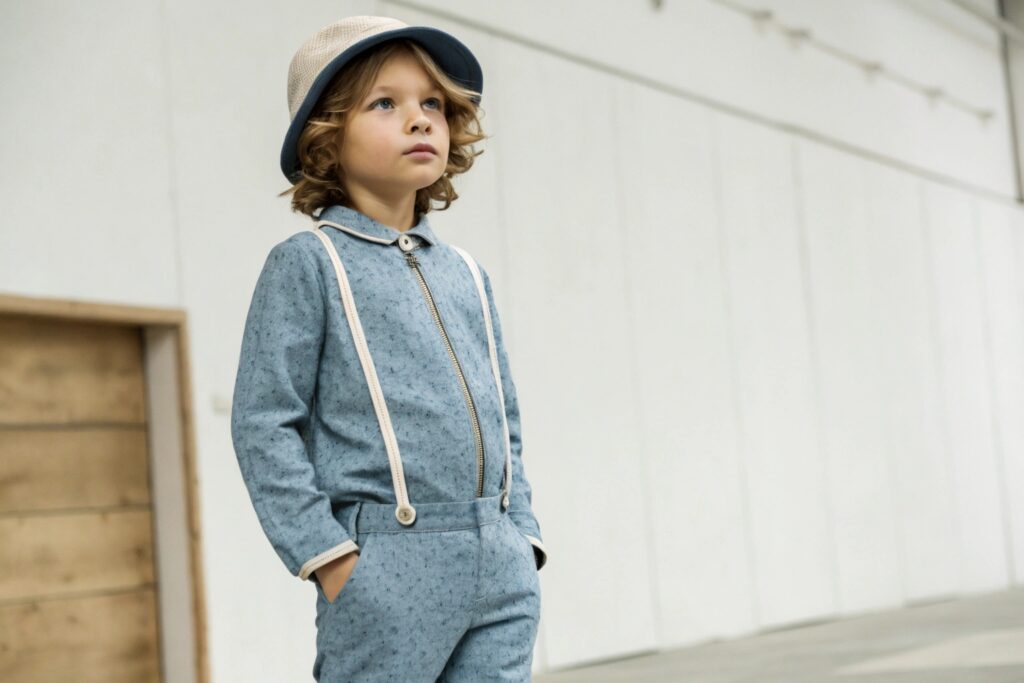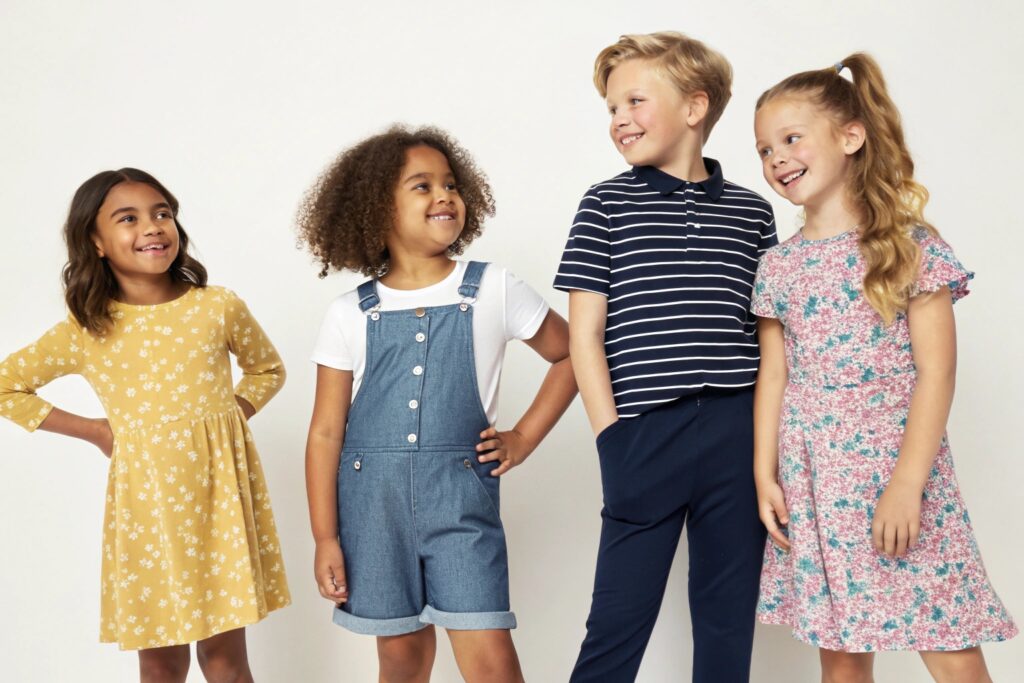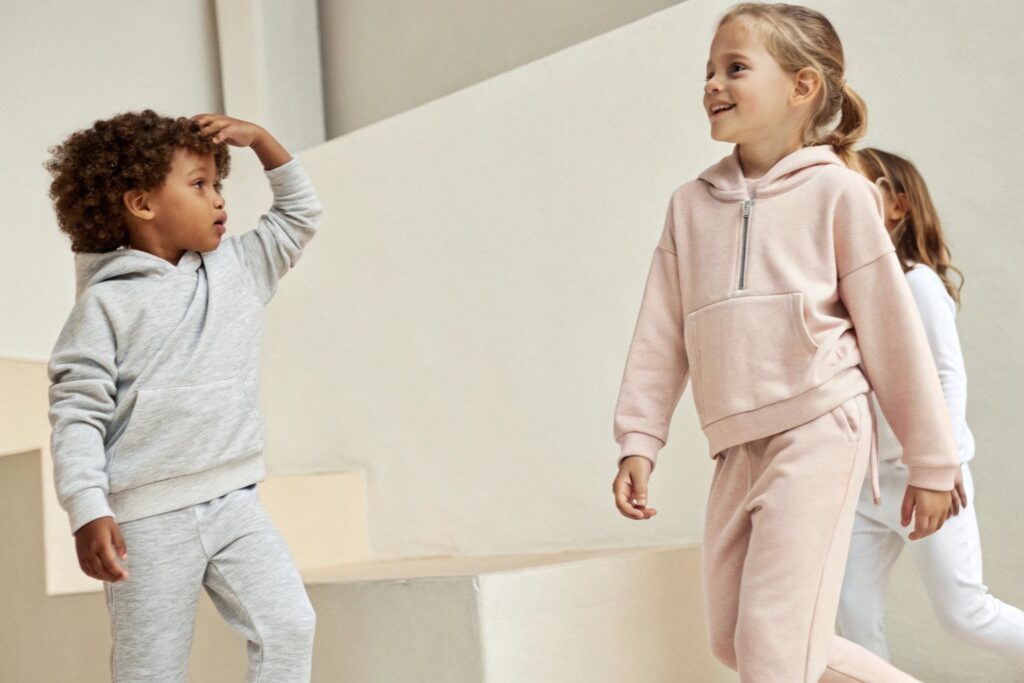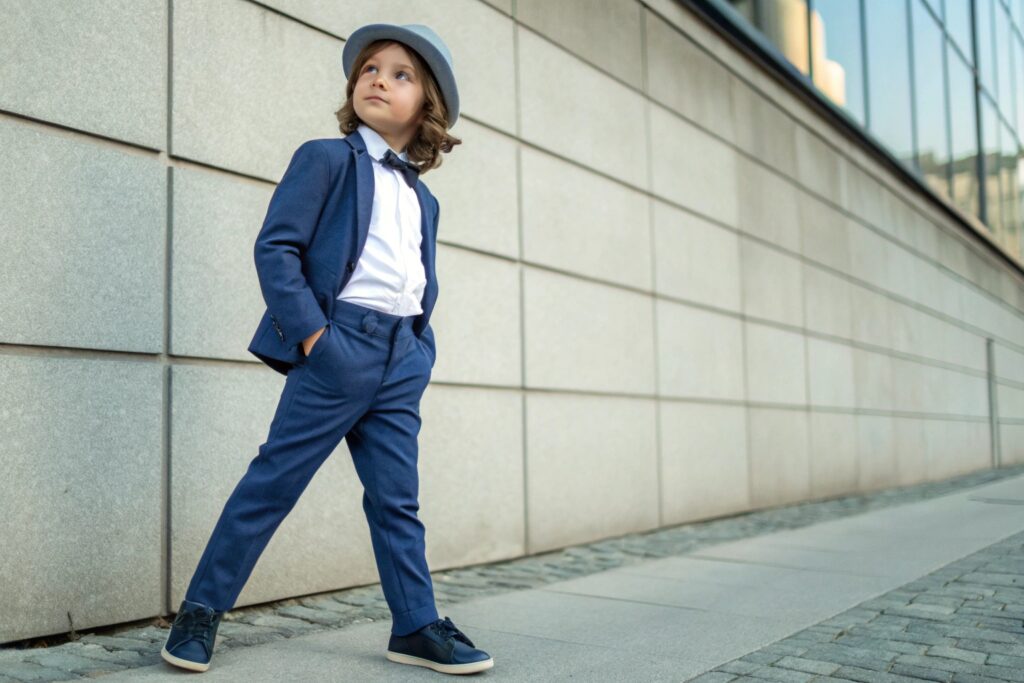Designing children’s clothing is about more than just style—it’s about creating garments that fit well, move with the child, and make every kid feel confident, no matter their body type.
To design kidswear that flatters all body types, focus on adaptable patterns, inclusive sizing, flexible fabrics, and body-positive fits. Every child deserves clothes that fit comfortably and look good.
This article explores fit strategies, size inclusivity, fabric choices, and how to thoughtfully design for both slim and plus-size children.
Key Fit Factors in Kidswear Pattern Design?
A good fit in children’s clothing means comfort, mobility, and visual balance. So what goes into getting the pattern right?
Key fit factors in kidswear pattern design include room for movement, age-appropriate proportions, adjustable features, and consistent grading across sizes.

Core pattern design elements:
| Fit Factor | Why It Matters |
|---|---|
| Shoulder and chest width | Prevents sagging or tightness |
| Armhole depth | Ensures comfort while raising arms |
| Rise and seat shape | Affects diaper/underwear coverage |
| Hemline length | Age-appropriate and safe for activity |
| Ease and stretch | Adds flexibility for crawling, jumping |
Common fit zones in kidswear:
- Torso fit: Children’s bodies vary widely in waist and length.
- Sleeve length: Needs to allow layering and movement.
- Waistbands: Adjustable options help clothes fit longer.
- Leg fit: From leggings to joggers, fit should match mobility needs.
Designers should test with real children across sizes and use flexible pattern blocks to ensure comfort across body types.
How to Make Inclusive Sizes for Children?
Size inclusivity isn’t just for adult fashion. Children come in a wide range of shapes and sizes too.
To make inclusive kidswear, offer a broader size range, add adjustable features, and use size charts based on actual body data—not just age.

Strategies for designing inclusive sizes:
| Strategy | Implementation Example |
|---|---|
| Extended size range | Include slim, regular, husky, and plus |
| Adjustable waists | Elastic + drawstring or buttonhole elastic |
| Dual sizing labels | Use height + weight rather than age only |
| Inclusive fit testing | Fit garments on kids of different builds |
Why this matters:
- Not all 8-year-olds wear size 8
- Many kids fall between standard sizes
- Inclusive sizes support body confidence early in life
At Fumao, we support brands with custom grading and plus-size options, so every child can find a fit that works.
Best Fabrics for Comfort and Flexibility in Kidswear?
Fabric choice plays a major role in how a garment feels and performs. Especially when designing for active children, it needs to move with the body.
The best fabrics for kidswear are soft, breathable, stretchy, and safe for sensitive skin. Cotton blends, jersey knits, French terry, and spandex-infused fabrics offer the most comfort and flexibility.

Best fabric options by use:
| Fabric Type | Ideal For | Features |
|---|---|---|
| Cotton-Spandex | T-shirts, leggings | Soft, stretchy, breathable |
| French Terry | Joggers, hoodies | Warm but breathable |
| Interlock Cotton | Babywear, sleepwear | Smooth surface, extra stretch |
| Bamboo Viscose | Pajamas, sensitive skin | Hypoallergenic, ultra-soft |
| Modal | Summer wear | Lightweight, drapes well |
What to avoid:
- Stiff woven fabrics for younger kids
- Polyester-only blends in warm climates
- Non-stretch seams for activewear
Fabrics that allow full range of motion help prevent tight spots and create a flattering, forgiving silhouette—especially important for diverse body shapes.
Design Tips for Plus-Size and Slim-Fit Kids’ Clothes?
Designing for slimmer or heavier kids shouldn’t mean simply resizing standard patterns. Fit, proportion, and visual harmony matter.
For plus-size kids, prioritize comfort without excess bulk. For slim-fit kids, avoid oversized looks that make the garment appear shapeless. Each requires its own thoughtful fit strategy.

Plus-size design tips:
| Element | Design Solution |
|---|---|
| Waistbands | Use wider, adjustable elastics |
| Seams | Strategic side paneling for structure |
| Silhouette | Slight A-line tops, longer hems |
| Prints & colors | Bold or vertical prints for balance |
Slim-fit design tips:
| Element | Design Solution |
|---|---|
| Armholes/shoulders | Use narrower cuts |
| Pants | Add drawstrings or ribbed cuffs |
| Tops | Avoid boxy cuts, use curved side seams |
| Details | Pockets, contrast panels for volume |
Inclusive styles both body types love:
- Leggings with extra stretch and flat seams
- T-shirts with raglan sleeves and curved hems
- Joggers with adjustable cuffs and roomy hips
- Dresses with elastic waists and breathable fabrics
At Fumao, we help brands develop plus-size and slim-fit lines by providing custom sizing blocks, real fit model testing, and factory-level production insights.
Conclusion
Designing kidswear that flatters all body types means combining thoughtful patterning, flexible sizing, and soft, stretchy fabrics. Whether you’re dressing slim, average, or plus-size children, comfort and confidence come first. Brands that take inclusivity seriously can create clothes that truly fit every child.










